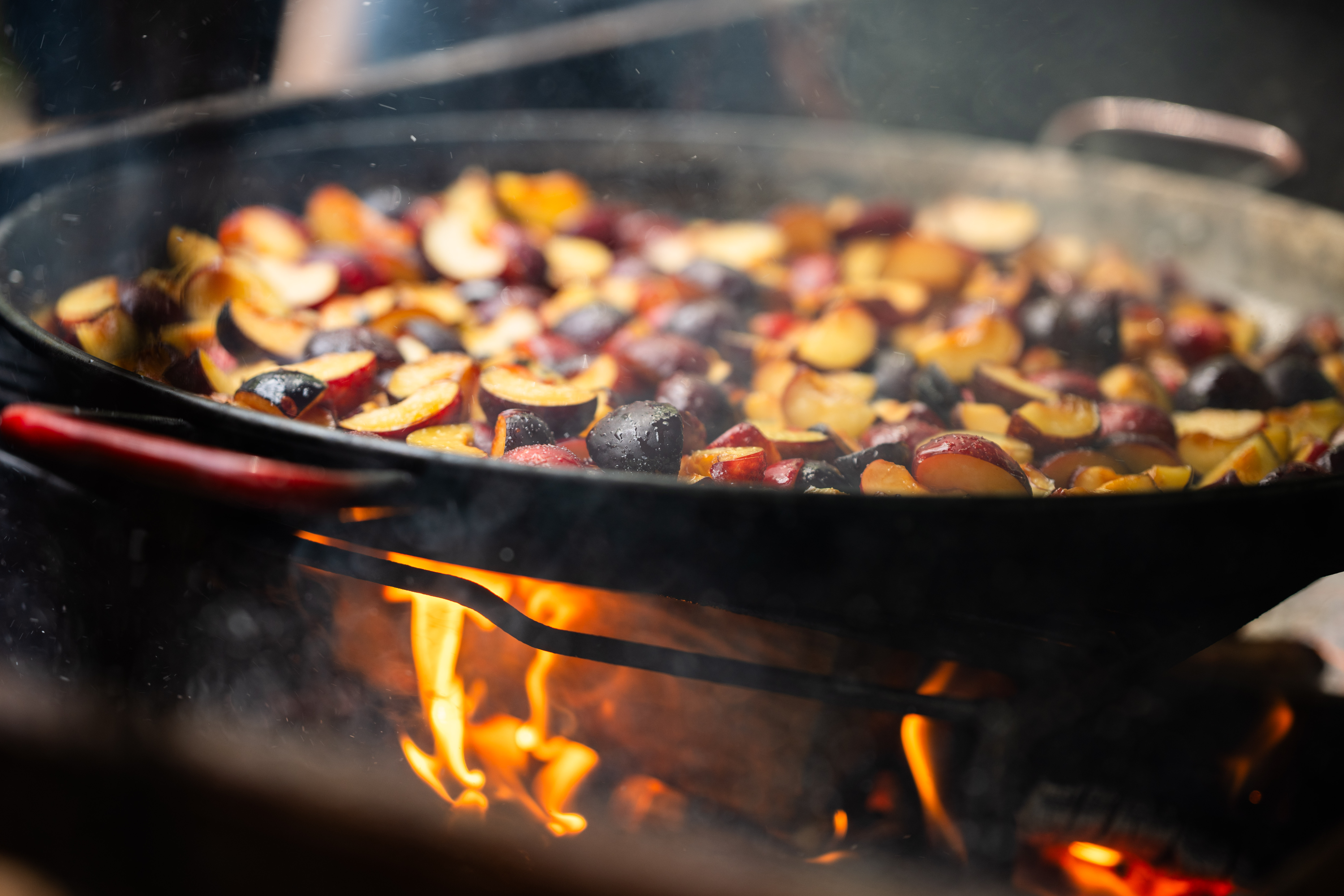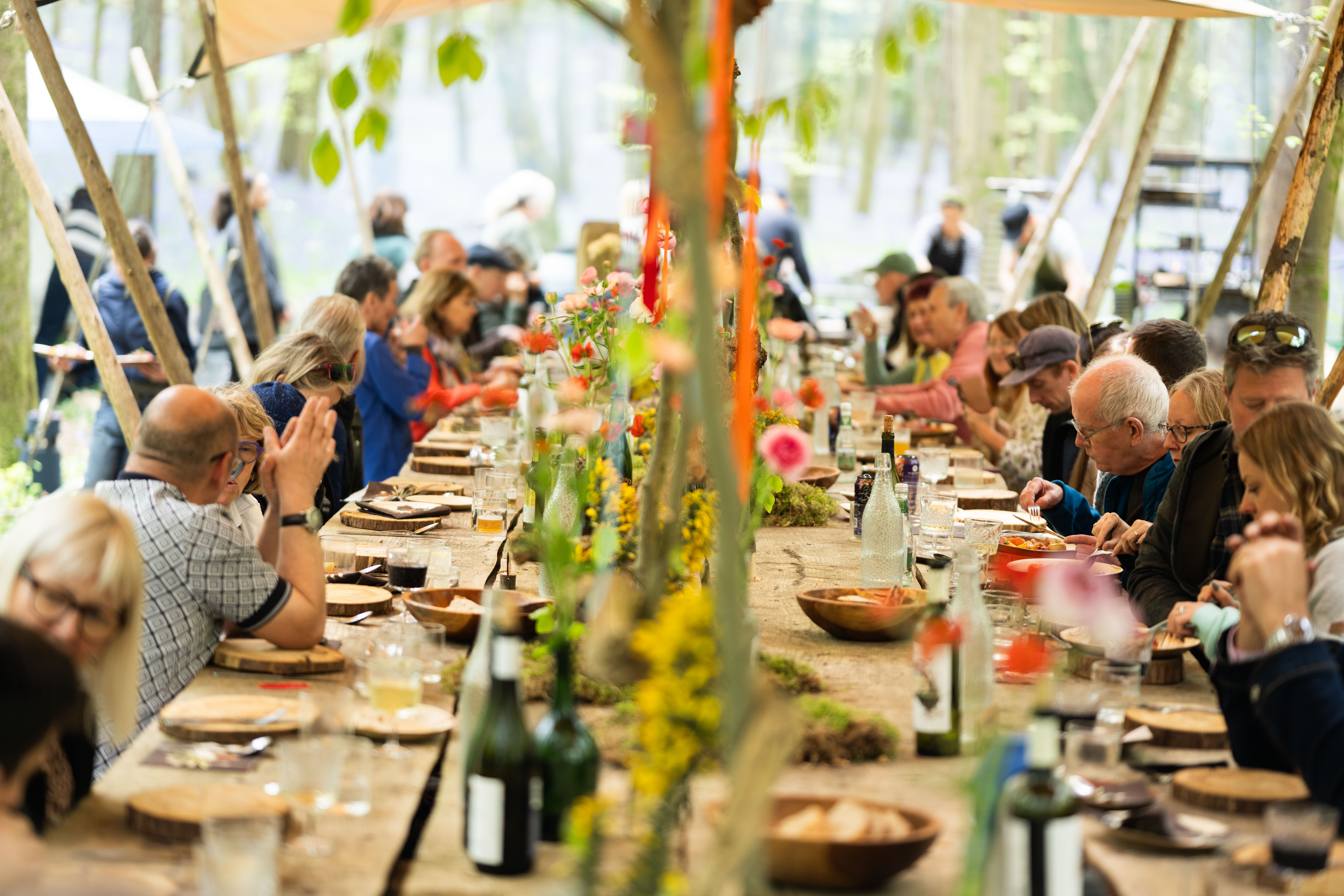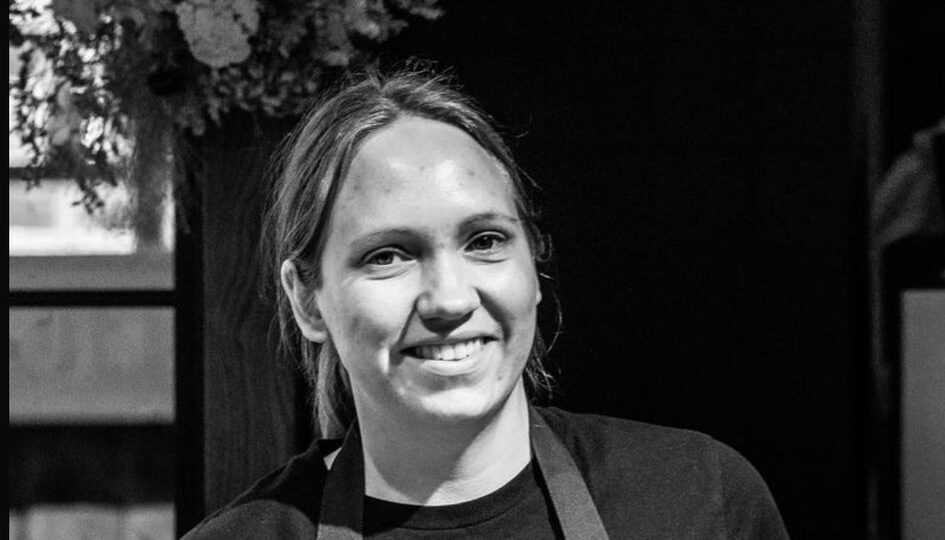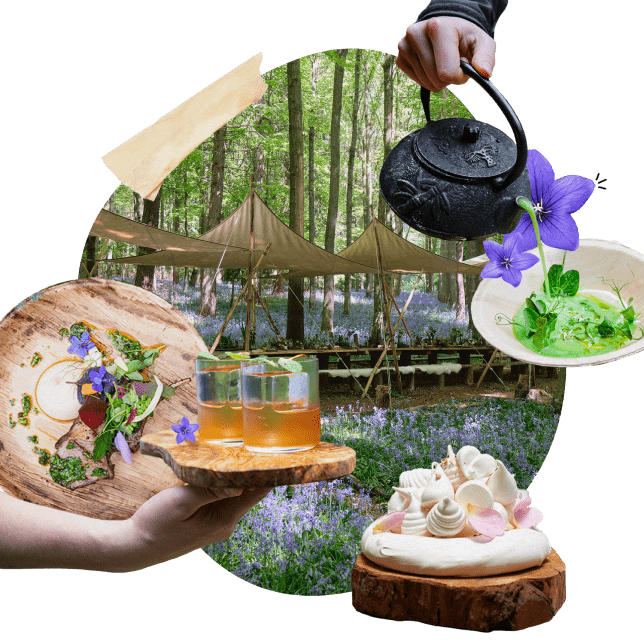With an air of practised nonchalance, she spun the dance of the fire, her hands moving with the precision of a watchmaker yet the ease of a poet. Ah, but here is the paradox! What appears effortless is, in fact, the labour of years, an illusion built on discipline, a symphony whose conductor has mastered every note. Theres had long ago pledged herself to the mysteries of fire, well before she donned the title of Head Chef at Ekstedt London, that temple of flames where woodsmoke and ambition intertwine.
And so, amid the whispers of leaves and the crackle of embers, her woodland feast took shape—chaotic yet composed, wild yet meticulous. The verdict? A triumph, naturally. And triumphs, as any sensible person knows, demand encores. This is why, on the 12 July, beneath an open sky and the watchful gaze of the Big Green Egg, she will return as one of our Queens of the Fire, one among five formidable women, each wielding flame as both weapon and muse.
Before the embers are lit, however, we sat with Theres to unspool the threads of her philosophy, her thoughts on Swedish meatballs, and the ever-turning wheel of a woman’s role in the kitchen—both at home and in the world beyond. Here, dear reader, is what she had to say…
Fire is the most ancient method of cooking—our earliest ancestors gathered around it to prepare food. Do you think fire connects us to our past, or have we lost something by modernising cooking?
Fire cooking taps into something very primal—it’s a direct link to how our ancestors prepared food and connected socially around a flame. When you gather around a campfire to grill hotdogs and roast marshmallows, it’s not just about the food; it’s about the ritual and shared experience that modern methods like sous vide, with their precision and efficiency, can’t replicate. Modern techniques are amazing for consistency and innovation, but there’s an irreplaceable warmth and communal bond that fire cooking brings. That “back-to-basics” feel is sparking a comeback as people crave authenticity, storytelling, and the nostalgia of gathering around a fire. It’s a celebration of our heritage and a reminder that sometimes, the
simplest methods connect us more deeply to our past.
If every culture has its own comfort food, do you think taste is universal or entirely shaped by experience?
For example, while salt will always taste salty, a salted caramel pudding might evoke warm memories of childhood for one person and a completely different sentiment for someone else. Our culture and personal history teach us which flavours remind us of home, celebration, or solace. So, although the ingredients’ inherent tastes are the same everywhere, the comfort we derive from them is very much a learned, context-dependent experience.
If aliens visited Earth and demanded one dish to represent humanity, what
would you serve them, and why?
Swedish meatballs are an excellent choice—they’re not only delicious, but they also capture a blend of simplicity and cultural richness that speaks to our shared humanity. In Sweden, these
meatballs (köttbullar) are traditionally made with a mix of ground beef and pork, spiced subtly with allspice and nutmeg, then served with creamy gravy, lingonberry jam, and potatoes. This combination of savoury, sweet, and creamy flavours exemplifies how a dish can evoke warmth, comfort, and a sense of community. Scandinavian cuisine around the world, making them a fitting ambassador for humanity on an interstellar stage.
If you could invent a sacred ritual around eating, what would it be?
I’d create a ritual called “The Feast of Unity and Gratitude. The meal would be served communally in a circle, with each dish representing a piece of our diverse culinary heritage, reminding us that while our ingredients remain constant in their basic taste, our shared experiences and traditions give them their true meaning. As everyone eats mindfully, the ritual would close with a silent moment of reflection and a collective vow to nurture both our bodies and our community.
Do we cook to express who we are, or do we discover who we are through
cooking?
Cooking is both an act of self-expression and a journey of self-discovery. When we cook, we channel our emotions, memories, and cultural heritage into a dish—expressing who we are in a tangible way. At the same time, the process of experimenting with flavours, techniques, and ingredients can reveal hidden aspects of our identity, helping us understand our preferences, traditions, and even our personal growth. For instance, you might recreate a family recipe that reminds you of childhood and sparks new ideas about how to adapt or improve it. In that sense, cooking becomes a dialogue between your past and your present self. This dual nature—expressing and discovering—makes the culinary arts a rich, ever-evolving form of personal storytelling.
If someone had to describe you only through your cooking, what would they
say
They’d probably say I’m resourceful, precise, and a little adventurous. I’d make sure the meal is well-balanced, with flavours that work together, but I’d also throw in an unexpected twist—maybe a Scandinavia you wouldn’t expect or a technique that elevates something simple. They’d notice I pay attention to the details, like getting the texture just right, and that I’m not afraid to experiment. Overall, they’d say my cooking is thoughtful, practical, and always aiming to impress, but not in a flashy way—more in a let me show you how good this can be way.
Is there such a thing as a “perfect dish,” or is the pursuit of it more important
then the outcome?
There isn’t a one-size-fits-all “perfect dish” because perfection in cooking is deeply subjective—it depends on personal taste, cultural background, and even the context in which the food is enjoyed. While some might strive to create a dish that ticks every box of balance, flavour, and presentation, most chefs and food lovers find that the creative journey—the experimentation, the learning from mistakes, and the evolution of a recipe—is what truly enriches the culinary experience. In essence, the pursuit of perfection inspires innovation and
personal expression, making the process itself more significant than any final outcome.
If a recipe is passed down for generations, does it belong to the past, or is
every cook who makes it reshaping its future?
A passed‐down recipe is far from a static relic of the past—it’s a living tradition. Each time
a cook prepares it, they honour their heritage while also adding their own unique twist, whether through ingredient substitutions, technique adjustments, or simply the way the dish is
presented. In this way, every cook becomes part of its evolving story, blending history with innovation and ensuring that the recipe continues to reflect both its cultural roots and contemporary creativity Food needs contrast—sweet and sour, crunch and softness—to be truly satisfying? Is the same true of life?
Just as a dish comes alive through the interplay of contrasting flavours and textures—sweet
balanced by sour, crunch softened by creaminess—life itself gains depth from its diverse experiences. The challenges, hardships, and moments of joy act much like complementary tastes: without the sour, the sweetness may feel overwhelming; without the crunch, the softness might seem flat. In both cooking and living, it’s the contrast that creates richness and balance, making the journey as satisfying as the destination.
Jean Anthelme Brillat-Savarin once said, “The discovery of a new dish does
more for human happiness than the discovery of a new star.” Do you agree?
Jean Anthelme Brillat-Savarin’s assertion that “the discovery of a new dish does more for human happiness than the discovery of a new star” highlights the profound, immediate joy that culinary innovations bring to our daily lives. While astronomical discoveries expand our understanding of the universe, they often remain abstract for many. In contrast, a new dish directly engages our senses, fosters communal bonds, and enriches cultural traditions, offering tangible happiness. Therefore, I agree with Brillat-Savarin’s sentiment, as culinary discoveries have a more immediate and personal impact on human happiness.
Throughout history, cooking has often been seen as “women’s work” in the home, yet the restaurant industry has been historically male-dominated. How do you see the role of female chefs evolving?
In summary, while the professional culinary world has historically been male dominated, the evolving role of female chefs is marked by increasing recognition and efforts toward inclusivity. Continued mentorship, supportive environments, and challenging traditional gender roles are essential for fostering a more equitable culinary industry. From the years I started as a chef over 20 years ago. I see a big difference; I don’t feel alone anymore. We have more female leaders, supporters, and star chefs. Which is good for the new generation to look up to.







